Top 20 Ways To Make Long Flights Comfortable
Why does a 12-hour flight leave one person shattered, while another remains strangely calm? The difference is preparation. Here's a comprehensive, practical playbook for achieving long flight comfort—so you don't just survive long flights, but make them work for you.
What Makes Long-Haul Flights So Hard—And What You Can Control
Cabin air is exceptionally dry, cabin pressure is lower than at sea level, and your circadian rhythm gets yanked across time zones. That combo drains moisture, disturbs sleep, and stiffens joints. You can’t change the airplane, but you can change how your body meets it.
A few fundamentals anchor everything that follows:
Dry Air Matters
Most cabins run at humidity levels far below what your skin, eyes, and sinuses prefer. That's one reason dehydration sneaks up on you during a flight; see this concise overview from Harvard Health on dry cabin air and hydration.
Circulation Matters
Being still for long periods can increase swelling and, on rare occasions, increase the risk of clotting. The CDC’s guidance on DVT during travel explains simple prevention.
Light Matters
Your internal clock is influenced by exposure to light. Managing light before, during, and after travel can help reduce jet lag; the NIH review on circadian timing and jet lag is a useful primer.
Hygiene Matters
You're in a shared space for a long time; basic steps can reduce the risk of infection ( WHO travel health advice).
These aren’t trivia—they’re the levers you’ll pull to turn “flight comfort tips” into real results.
Seat Strategy: Your Single Biggest Comfort Upgrade
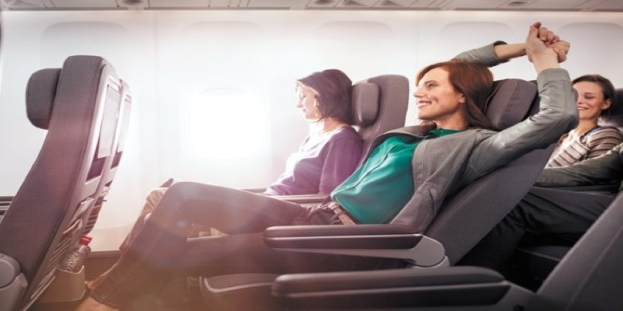
Think of your seat as your studio apartment for the next half day. Would you rent it without looking at the floor plan?
Legroom Beats Location
Exit rows and extra-legroom seats buy space for knees and hips to change angle—a quiet revolution for long flight comfort. Bulkheads sometimes provide extra room, but can remove under-seat storage; only book if you won't mind not having the bag at your feet.
Aisle Or Window—Choose For Your Goal
If uninterrupted rest is your priority, window seats allow you to lean back, control the shade, and skip the drink-cart wake-ups. If circulation is king, an aisle seat guarantees you can stand when you like. Middle seats? Only if you're traveling with companions and want to book a block of rooms.
Avoid Seat Traps
The last rows often have limited recline; rows near the galley and lavatories trade convenience for noise and foot traffic. If the aircraft type allows, pick seats slightly forward of the wing for a bit less engine rumble.
Premium Economy Vs. Extra-Legroom Economy
Premium economy adds width, pitch, and often a footrest—three different comfort vectors. Extra-legroom economy gives pitch alone. If you’re tall, pitch dominates; if you’re broad-shouldered, width can be the game changer. Think in terms of “comfort per dollar per hour.”
This is the bedrock: a well-chosen seat makes every other flight comfort tip work better.
Build A Personal Comfort Kit
Your bag should turn a standard seat into a semi-personal cocoon. Pack items that solve the specific problems of cabin dryness, noise, light, posture, and hygiene—no clutter, only tools you’ll actually use.
Neck Pillow That Matches Your Sleep Style
If you tilt forward, consider a structured front-support design. If you prefer side sleep, a thicker side bolster or a J-shaped pillow can help prevent the "head bob." Memory foam provides consistent support for hours; inflatable pillows save space but can feel bouncy. Try it at home in a chair for 20 minutes—you’ll know fast if it’s right.
Eye Mask That Truly Blocks Light
Shallow masks press against the eyelids; deeper, "contoured" masks leave room for blinking and prevent smudged makeup. A real blackout seal is worth its weight in gold when cabin lights suddenly pop on mid-nap.
Noise Control In Two Layers
Foam earplugs reduce roar across frequencies; active noise-canceling headphones tackle droning engines and layered chatter. Use both when you sleep; switch to headphones for movies and music. Your brain relaxes when the noise floor drops.
Hydration Helpers
A collapsible bottle avoids bulk. Add electrolyte packets sparingly—too much salt increases thirst and swelling. For sinuses and eyes, a small nasal saline spray and preservative-free artificial tears offset the Sahara-level humidity. A fragrance-free moisturizer and lip balm protect skin; reapply every few hours.
Compression Socks
Graduated compression reduces ankle and calf swelling and supports venous return—simple, effective DVT prevention in concert with movement.
Cleanliness Basics
Alcohol-based hand rub, a few disinfecting wipes for armrests/tray, a travel toothbrush and tiny toothpaste, and a spare mask if you prefer masking. Wipe surfaces when seated; that alone lowers your contact load.
Temperature Control
A light merino or cotton layer and a big scarf serve as a blanket, lumbar pad, or privacy screen. Airlines' blankets are unpredictable; your own solves the variability.
This kit is a portable answer key for long flight comfort, customized to you.
Hydration And Nutrition That Work At 36,000 Feet
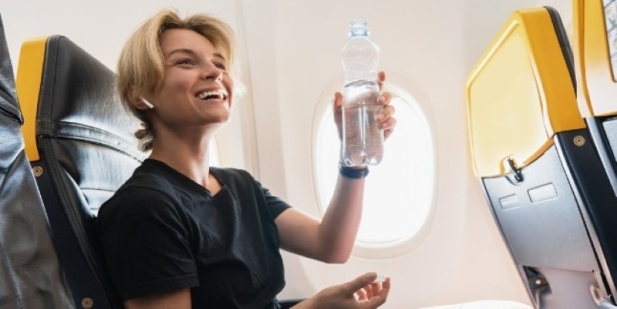
“Drink more water” is too vague. The cabin’s dryness means you lose moisture through breathing and skin, not just bathroom trips.
Hydrate Steadily, Not In Gulps
Aim for small sips every 15–20 minutes. Think of your bottle like a metronome. Over-drinking in short bursts simply means more time on the aisle without improved hydration.
Choose Smart Fluids
Water first; herbal tea can soothe; go light on coffee (especially after your destination's mid-afternoon), and be conservative with alcohol. Both are mild diuretics and can impair sleep quality. If you use electrolytes, dilute them more than you would after a workout—your goal is to retain moisture, not to consume excessive sodium.
Pack Calm-Digesting Snacks
High-salt, ultra-processed snacks puff you up and spike thirst. Choose protein-plus-fiber combos with modest salt, such as roasted nuts, a simple protein bar without sugar alcohols, oat crackers with nut butter, or jerky in a small portion. Fruit with peel (such as bananas and mandarins) travels well and adds hydration. If you're prone to reflux, avoid very fatty meals before and early in the flight; a slightly earlier, lighter dinner often yields better sleep.
Time Your Caffeine With Your Target Time Zone
Once you set your watch to the destination, align caffeine to their morning/lunch window. That's an easy, underappreciated jet lag nudge
This isn’t asceticism—it’s fuel selection that supports long flight comfort and next-day clarity.
Movement: The Anti-Stiffness Routine You’ll Actually Do
You don't need a boot camp in the galley. You need a friction-free pattern you repeat.
Every Hour or Two, Stack These:
- Ankle pumps, 20 each side. Heels down, toes up; then toes down, heels up. This squeezes the calf “muscle pump,” aiding venous return—one of the simplest flight comfort tips with outsized payoff.
- Knee lifts, 10 each side. While seated, lift one knee toward your chest and hold for two seconds. Your hips and lower back will thank you.
- Seated figure-four stretch, 20 seconds each side. Ankle on opposite knee; hinge forward gently. This opens the hips without standing.
- Shoulder rolls and scapular squeezes. Roll shoulders forward/back; then pinch blades together for five seconds. Undo the rounded-shoulder slump.
- Two aisle strolls. Even 60–90 seconds resets your body.
On nighttime flights, do the full sequence every movie change or podcast episode. On daytime flights, add a five-minute stand-and-stretch by the galley during quiet periods. Pair this with compression socks and hydration, and you significantly tilt the odds in favor of long flight comfort.
Sleep You Can Count On
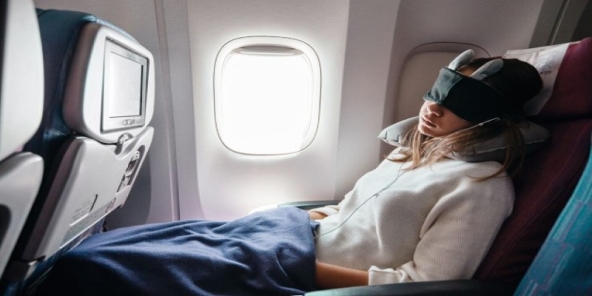
Perfect sleep is rare on planes; predictable rest is a realistic expectation. Build it like you would at home—control light, sound, temperature, posture, and pre-sleep signals.
Light
Put the eye mask on the moment you intend to rest. If you’ve set your watch to destination time, treat the mask like “lights out” on their clock. Avoid overhead lights for an hour before planned sleep.
Sound
Foam earplugs under noise-canceling headphones create a quieter “room.” White-noise tracks help some travelers block out sudden sounds (such as crying or carts).
Temperature
A slightly cool micro-environment promotes drowsiness. Use the overhead air jet to move air across your torso—not your eyes—to keep things fresh under the blanket.
Posture
Slight recline reduces spinal loading and opens your hip angle; a small lumbar pad (rolled scarf) prevents the mid-back hump. Place your pillow where you naturally drift—behind your head if you lean back, against the sidewall if you lean sideways, or in front if you nod forward (front-support pillows shine here).
Ritual
Mimic a tiny bedtime routine: teeth, moisturizer, eye mask, two minutes of slow breathing. The routine is a cue your brain recognizes—even at 36,000 feet.
Aids
Melatonin (0.5–3 mg) can help shift timing if taken at the correct local evening; avoid sedative sleep meds unless your doctor advises them—they reduce movement (a DVT consideration) and can leave you foggy. If you're congested before a flight, consult with a clinician about using a short-acting decongestant near landing to protect your ears and sinuses.
The goal isn’t eight flawless hours; it’s one or two solid sleep cycles that let you arrive functional. That’s how you survive long flights without feeling erased.
Ears, Eyes, Skin, And Sinuses: Micro-Care That Pays Off
Ears
During descent, chew gum, swallow, or sip water to keep the Eustachian tubes open and moving. A gentle Valsalva maneuver (pinch your nose and exhale softly) can help equalize pressure. If you're recovering from a sinus or ear infection, get clearance from your doctor before flying; pressure changes can be painful.
Eyes
Contacts + dry cabins = irritated eyes. Consider glasses for the flight and use preservative-free artificial tears every few hours.
Skin And Lips
Layer hydration: applying a humectant (such as hyaluronic acid) under an occlusive moisturizer locks in water; reapply lip balm frequently.
Nose And Throat
Saline spray keeps nasal passages comfortable; a lozenge or warm water soothes a dry throat. Tiny, consistent steps add up to long flight comfort.
Clothing And Temperature
Base layer: Breathable, moisture-managing fabrics (merino, bamboo, or soft cotton blends). They stay comfortable through temperature swings.
Mid layer: A light, long-sleeve or thin sweater you can shed fast.
Outer or accessory: A large scarf can serve as a blanket, pillow, or privacy screen.
Feet: Compression socks beneath roomy, slip-on shoes—your feet will swell a bit. Tight shoes amplify fatigue throughout your legs.
Waist: Opt for a soft waistband; rigid edges can dig into hips when seated for hours.
Dress for variation, not for a fixed temperature, and opt for comfortable attire for long flights.
Work, Entertainment, And Focus Without The “Airplane Hangover”
If you plan to work, batch it. Pick one or two meaningful tasks you can do offline and clear in a single sitting. Pre-download files, notes, and reference PDFs in case the Wi-Fi stutters. Use blue-light filters and lower screen brightness at “night” in destination time to avoid confusing your body clock.
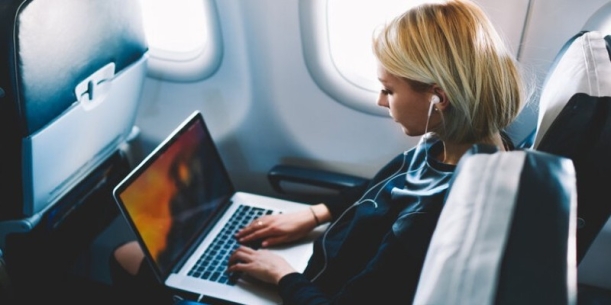
If you’re leaning into leisure, pre-load a mix: a gripping novel, two comfort movies, and a slow, soothing audiobook you won’t mind falling asleep to. Headphones and an eye mask signal “do not disturb” better than a glare ever could.
This is where mental framing makes a difference: treat the flight as protected time. That mindset alone is one of the underrated tips for flight comfort.
Jet Lag: Fix It Before It Breaks You
Jet lag isn't a moral weakness—it’s biology. But you can outsmart it.
Shift Light First
Aim for morning sunlight at your destination as soon as possible; light is the primary time cue for your brain (NIH circadian review). If you land late, dim the lights and keep screens low—create the illusion of a sunset.
Eat On Local Time
Even if you're not hungry at "their" breakfast, a light, protein-forward meal nudges your clock. Avoid large late-night meals when your body is expecting sleep.
Nap Carefully
Keep any nap on the arrival day under 30 minutes and before late afternoon local time. Short naps restore a surprising amount of function without wrecking nighttime sleep.
Move
A 15–20 minute walk at a local morning or early afternoon location helps accelerate re-anchoring your clock and alleviates cabin stiffness.
These are simple and scalable ways to survive long flights and the days that follow.
Cleanliness And Infection Control In Shared Air
Airplanes have strong airflow and filtration, but you still share surfaces and proximity with others. Hand hygiene is your power tool. Sanitize hands after touching seatback screens, bins, or lavatory handles; wipe your tray and armrests when seated. Aim the overhead air nozzle to blow slightly in front of your face; moving air can help disperse droplets away from your immediate space. For general travel health guidance, the WHO travel health page is a solid hub.
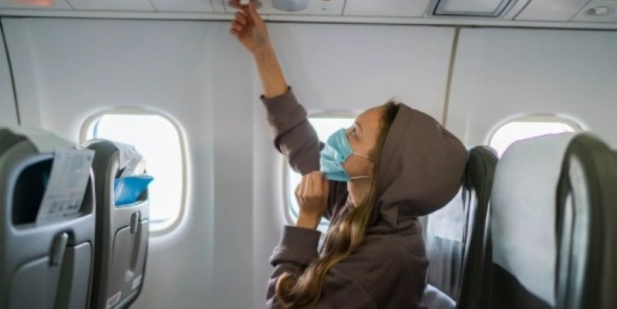
If you prefer wearing a mask (e.g., during cold/flu surges), choose a comfortable, well-fitting option that you can wear for hours without needing to adjust. Comfort is compliance.
Alcohol, Sleep, And The Myth Of The “Knockout Nightcap”
Alcohol may feel relaxing, but it’s deceptive at altitude. It dehydrates, fragments sleep, and reduces the proportion of restorative deep sleep. If you do drink, do it with food, match with water, and stop early in the flight—long before your intended sleep window. That single choice often separates a decent rest from a restless, dry-mouth slog.
Motion Sickness, Headaches, And Turbulence: Practical Remedies
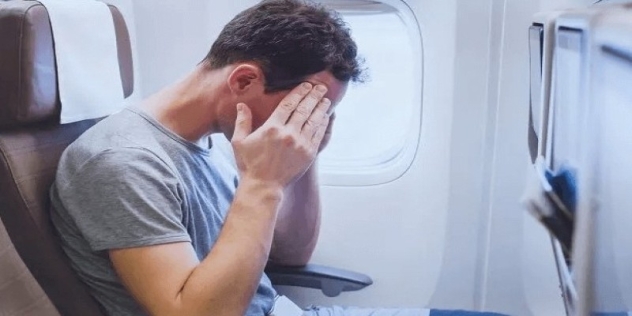
Motion Sickness
Select seats over the wing (for the least motion), keep your gaze steady (window views can help), and use fresh air from the overhead vent. Ginger chews or capsules help some travelers. If you use medicated options (meclizine, scopolamine), test them before travel day for side effects.
Headaches
Combine hydration with breaks from screens, and consider a cool compress (even a damp paper towel) on temples. If you use OTC pain relievers, follow labeled dosing and be mindful of any personal contraindications.
Turbulence
Buckle up whenever seated, even if the sign is off. If anxiety spikes, box breathing (inhale for 4 seconds, hold for 4 seconds, exhale for 4 seconds, hold for 4 seconds) helps calm the body. Remind yourself that turbulence is uncomfortable but not unsafe; crews fly through it routinely.
These tactics are quiet allies for long flight comfort when things get bumpy—literally.
Families, Older Adults, And Pregnancy: Targeted Tweaks
With Kids
The comfort kit concept scales—small headphones, their own blanket, a familiar plush, and pre-downloaded shows or audiobooks. Offer sips often; dry cabins amplify crankiness. For ear pressure during descent, use sippy cups, lollipops, or a game of “who can swallow the loudest?”
Older Adults
Prioritize aisle seats for easy movement, compression socks for improved circulation, and steady hydration. Keep medications in carry-on with a simple schedule card adjusted to the destination time to avoid dosing confusion.
Pregnancy
Many can safely fly in the second trimester, but always check with your clinician—especially for longer trips or complicated pregnancies. Wear compression socks, walk frequently, and position the belt low across the hips. Review DVT risk mitigation, and bring a note if your airline requests medical clearance in the near term.
Tailored adjustments amplify the universal flight comfort tips you’re already using.
Tech And Power: Ensuring Your Digital Life Survives The Flight
Download airline apps for boarding passes and seat/meal updates. Pre-load entertainment across multiple apps in case one demands re-login without Wi-Fi. Bring a power bank that meets airline rules (most allow up to 100 Wh in carry-on only). Cables: pack duplicates; the one you drop under the seat will be the one you need.
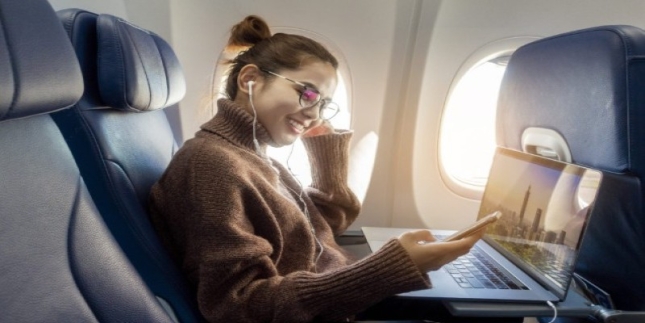
Think of power as a budget: screen brightness is low, Bluetooth is turned off when not in use, and airplane mode is enabled. Your future self at immigration—needing a QR code, address, or rideshare—will thank you.
Etiquette That Quietly Improves Your Comfort
Courteous micro-choices bounce back as comfort. Recline gradually and check behind you; trade seats kindly if you're solo and a family is split—most people reciprocate later when you need an aisle dash. Use headphones for audio, keep aisles clear, and signal attendants promptly for any needs instead of piling up requests during the service rush. Less friction equals more long flight comfort for everyone—including you.
Troubleshooting: When Things Don’t Go To Plan
Can’t Sleep?
Switch goals from sleeping to resting. Mask on, audio off, eyes closed. Even a 20-minute "non-sleep deep rest" can help lower stress and improve your overall well-being upon arrival.
Neighbor’s Light Is Blazing?
Eye mask first. If that fails and you’re comfortable asking, a polite “Would you mind angling your light a little? It’s just catching my eyes—thanks!” solves it 90% of the time.
Spilled Drink/Clutter Spiral?
Keep a small zip bag for trash at hand, ask for one extra napkin at service, and reset your mini-space. Tidiness invites calm.
Seat Won’t Recline Or Is Broken?
Ask discreetly if there’s a maintenance log entry and whether a seat swap is possible once boarding finishes. Gate agents and crew can sometimes work small miracles after the initial shuffle.
Ear Pain On Descent?
Sip, swallow, gently perform Valsalva, and consider warm compresses (a cup with a warm paper towel inside) held over the ear to ease pressure equalization. Severe or persistent pain warrants medical advice before your next trip.
A little self-coaching here is part of the toolkit that helps you survive long flights without spiraling.
Security And Boarding: Smooth Starts, Better Seats
Arrive with margin. Rushing elevates cortisol and narrows your attention. If you like to refill your bottle after security, remember the 3-1-1 rule for liquids in carry-ons. Board when your group is called, unless you're guarding for bin space—an early board means more time to set up your comfort kit and settle into a good posture before the crowd.
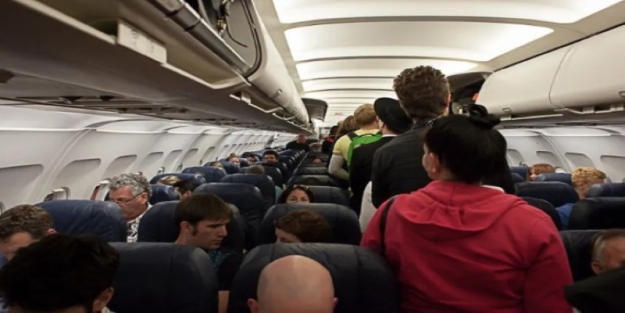
When seated, set your micro-environment deliberately: wipe, stash, adjust vents, locate your mask/eye mask/earplugs, then exhale. That 90-second ritual marks the transition from airport chaos to personal space—one of the most effective, yet least discussed, flight comfort tips.
Upgrade Math: When Spending A Little Saves A Lot
If a $70 extra-legroom seat saves you from back pain that wrecks your first day—or allows two hours of real work you'd otherwise lose—that's valuable. Lounge day passes are similar: a quiet seat, reliable outlets, and decent food can transform long connections into restorative breaks. Think in terms of value per hour of function gained, not luxury for luxury's sake. Long flights can be a practical investment disguised as a treat.
Mindset And Breath: The Quiet Multiplier
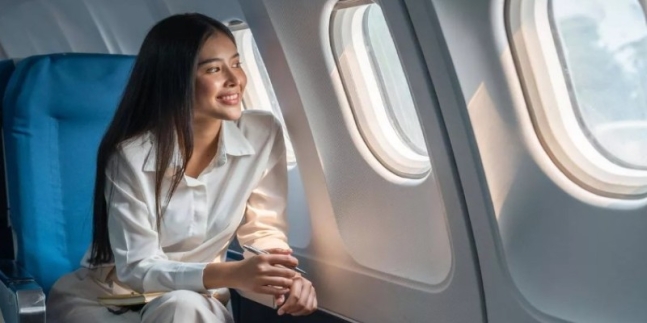
Your body listens to your breath. A few rounds of 4-7-8 (inhale 4, hold 7, exhale 8) lengthens exhalation, nudging the parasympathetic system (“rest and digest”). Pair that with a simple mindset: “This is protected time to read, do nothing, or sleep.” That reframe defangs impatience and, paradoxically, makes the hours feel shorter. It’s not woo—it’s a cognitive habit that helps you survive long flights with grace.
Arrival: Land Ready, Not Wrecked
On touchdown, drink water, breathe fresh air on the jet bridge if you can, and walk with purpose through the terminal (micro-exercise). Outside, seek daylight if it’s day, dimness if it’s night. Eat on local time and keep the first evening low-key. A gentle stretch in your hotel room—hips, hamstrings, shoulders—loosens the flight out of you. These bookend behaviors lock in all the upstream work you’ve done for long flight comfort.
Was this helpful? Share your thoughts
- Learned practical methods
- Solved my questions
- Inspired new ideas
-
![Hiking Mount Fuji In 2025: Guided Vs Unguided Trips]() Hiking Mount Fuji In 2025: Guided Vs Unguided Trips
Hiking Mount Fuji In 2025: Guided Vs Unguided Trips -
Mount Fuji stands as a beacon of natural wonder, drawing adventurers from around the globe to its snow-capped peak. This majestic volcano, with its symmetrical cone, has inspired artists and hikers for centuries. As 2025 approaches, new regulations aim to preserve its beauty while ensuring safer ascents. This guide breaks down the choices between guided and unguided hikes, equipping readers with all the details needed to plan a memorable journey up Japan's iconic summit.
Explore More





